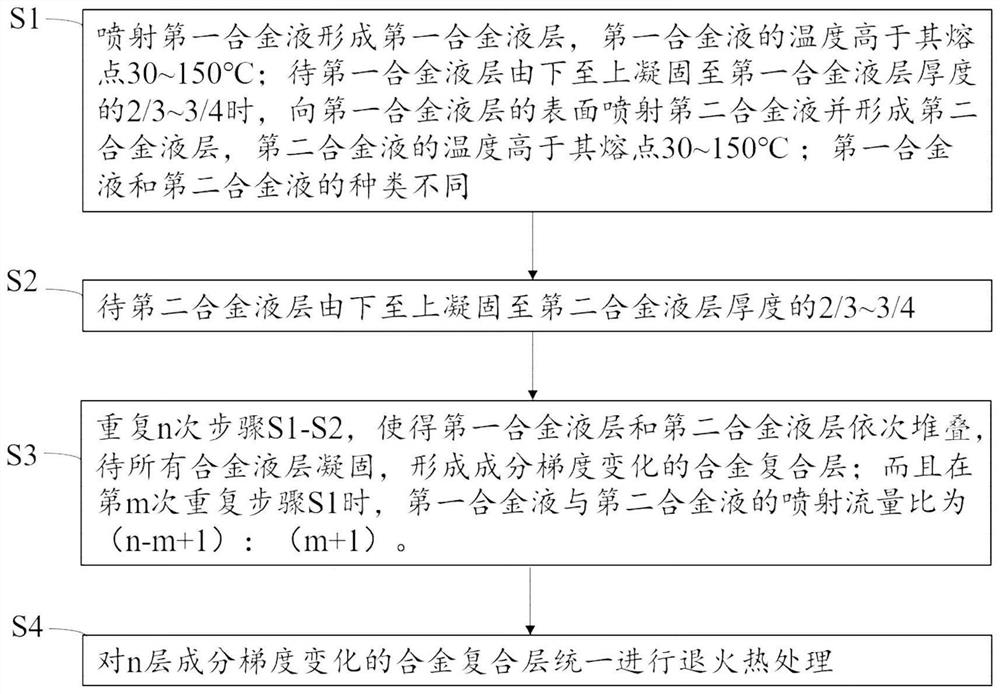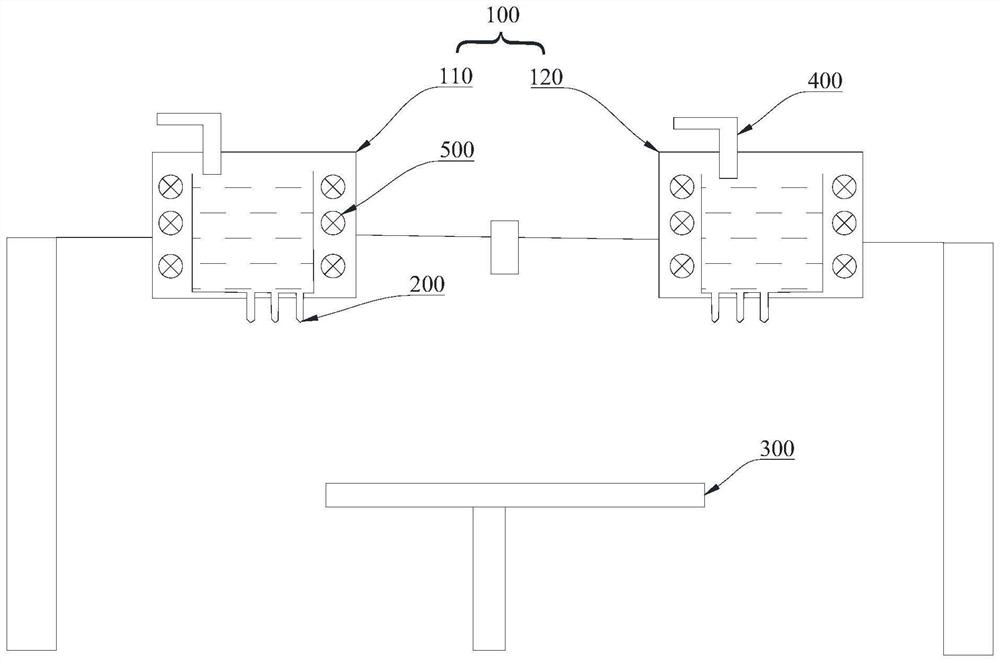Alloy composite layer with components changing in gradient mode and preparation method of alloy composite layer
A composition gradient, composite layer technology, applied in the direction of additive manufacturing, additive processing, etc., can solve the problems of easy cracking of materials, consumption of large inert gas atomization liquid flow, and hindering the practical application of components.
- Summary
- Abstract
- Description
- Claims
- Application Information
AI Technical Summary
Problems solved by technology
Method used
Image
Examples
preparation example Construction
[0031] The embodiment of the present application provides a preparation method of an alloy composite layer with a composition gradient, and the process flow chart is as follows: figure 1 The specific steps are as follows:
[0032] S1, spray the first alloy liquid to form the first alloy liquid layer, the temperature of the first alloy liquid is 30-150°C higher than its melting point; wait for the first alloy liquid layer to solidify from bottom to top to 2 / 3 of the thickness of the first alloy liquid layer ~3 / 4, spray the second alloy liquid to the surface of the first alloy liquid layer and form the second alloy liquid layer, the temperature of the second alloy liquid is 30 ~ 150 ℃ higher than its melting point, the first alloy liquid and the second alloy liquid Different types of liquid.
[0033] If the temperature of the alloy liquid is too high, the degree of superheat will be very large, which is not conducive to the formation of uniform and fine microstructures, and it ...
Embodiment 1
[0051] This embodiment provides an alloy composite layer with a composition gradient, which is obtained by the following preparation steps in a 3D printer:
[0052] S1. In the first crucible 110, the M2 high-speed steel liquid is placed as the first alloy liquid, and the M2 high-speed steel liquid is sprayed to form the M2 high-speed steel liquid layer, so as to ensure that the temperature of the M2 high-speed steel liquid is 50°C higher than the melting point of the M2 high-speed steel, and the spray flow rate It is 10kg / min; in the second crucible 120, the M3 high-speed steel liquid is filled as the second alloy liquid, and when the M2 high-speed steel liquid layer solidifies to 2 / 3 of the thickness of the M2 high-speed steel liquid layer from bottom to top, the M2 high-speed steel liquid is added to the M2 high-speed steel liquid. The surface of the liquid layer is sprayed with M3 high-speed steel liquid to form an M3 high-speed steel liquid layer. The temperature of the M3 ...
Embodiment 2
[0057] This embodiment provides a gradient composite layer alloy material with continuously changing composition, which is obtained by the following preparation steps in a 3D printer. Compared with the preparation steps of Embodiment 1, the main differences in this embodiment are as follows:
[0058] The 5V high-speed steel liquid is selected as the second alloy liquid to ensure that the temperature of the 5V high-speed steel liquid is 100°C higher than its melting point.
[0059] Among them, the composition of 5V high-speed steel includes: C: 2.0%, Si: 0.5%, Mn: 0.4%, Cr: 5.2%, Mo: 4.0%, V: 5.5%, W: 2.5%, Co: 0.3%, the remainder The amount is Fe; its melting point is 1320 °C.
PUM
 Login to view more
Login to view more Abstract
Description
Claims
Application Information
 Login to view more
Login to view more - R&D Engineer
- R&D Manager
- IP Professional
- Industry Leading Data Capabilities
- Powerful AI technology
- Patent DNA Extraction
Browse by: Latest US Patents, China's latest patents, Technical Efficacy Thesaurus, Application Domain, Technology Topic.
© 2024 PatSnap. All rights reserved.Legal|Privacy policy|Modern Slavery Act Transparency Statement|Sitemap



